

Chiang Rai – Art and Life Route
A little mountain town steeped in art, culture, and lifestyle, shaped by diverse ethnic backgrounds. Chiang Rai invites visitors with its simple yet lovely way of life, ancient temples, and timeless architecture—all blending seamlessly with the natural surroundings. In the heart of the Old Town, WABU teams up with local insiders to curate a walking route that reveals Chiang Rai in all its depth: a broader perspective filled with fine details. Take your time. Savor the slow, soulful rhythm of Chiang Rai—and discover its quiet, quirky charm one step at a time.



1
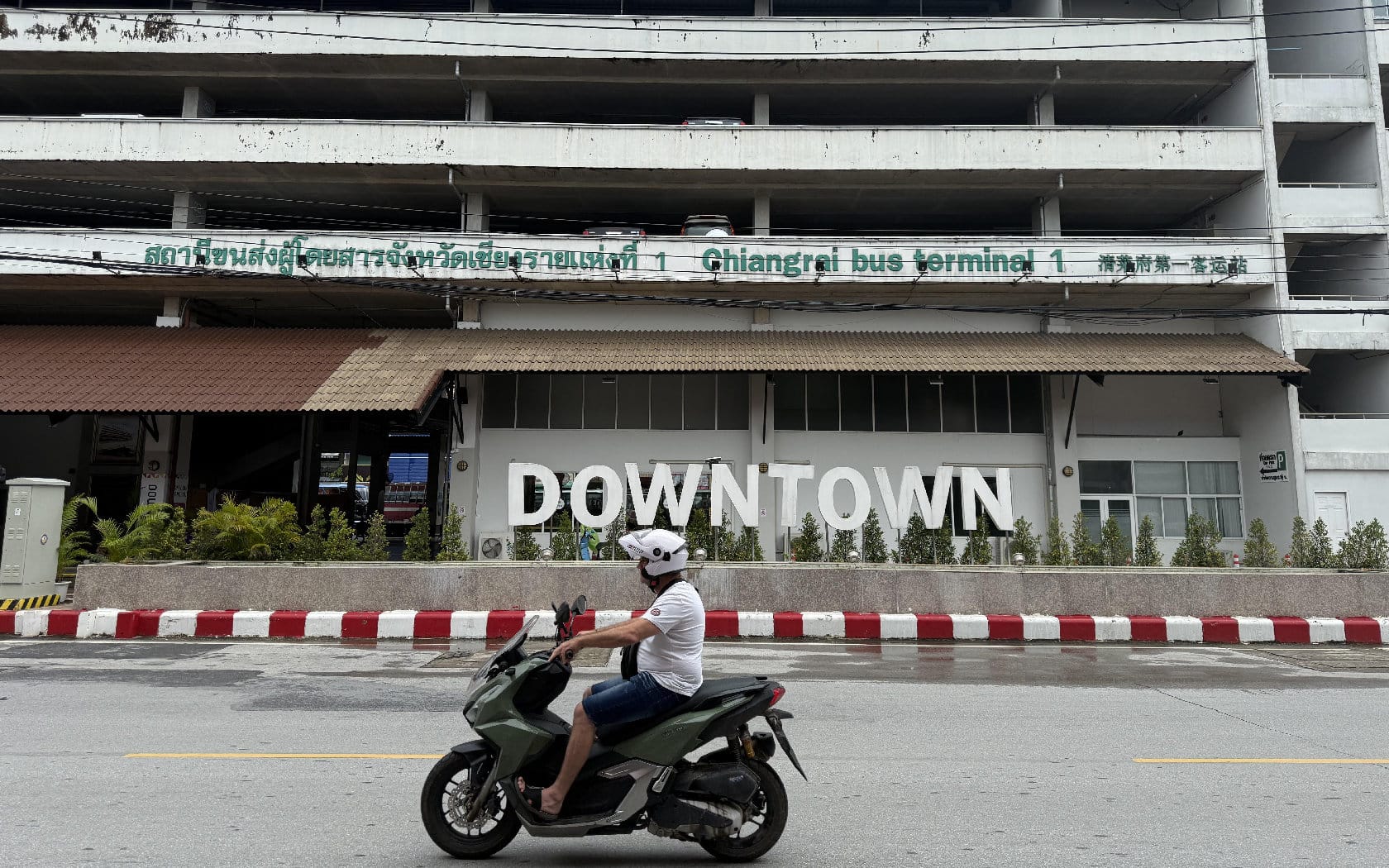
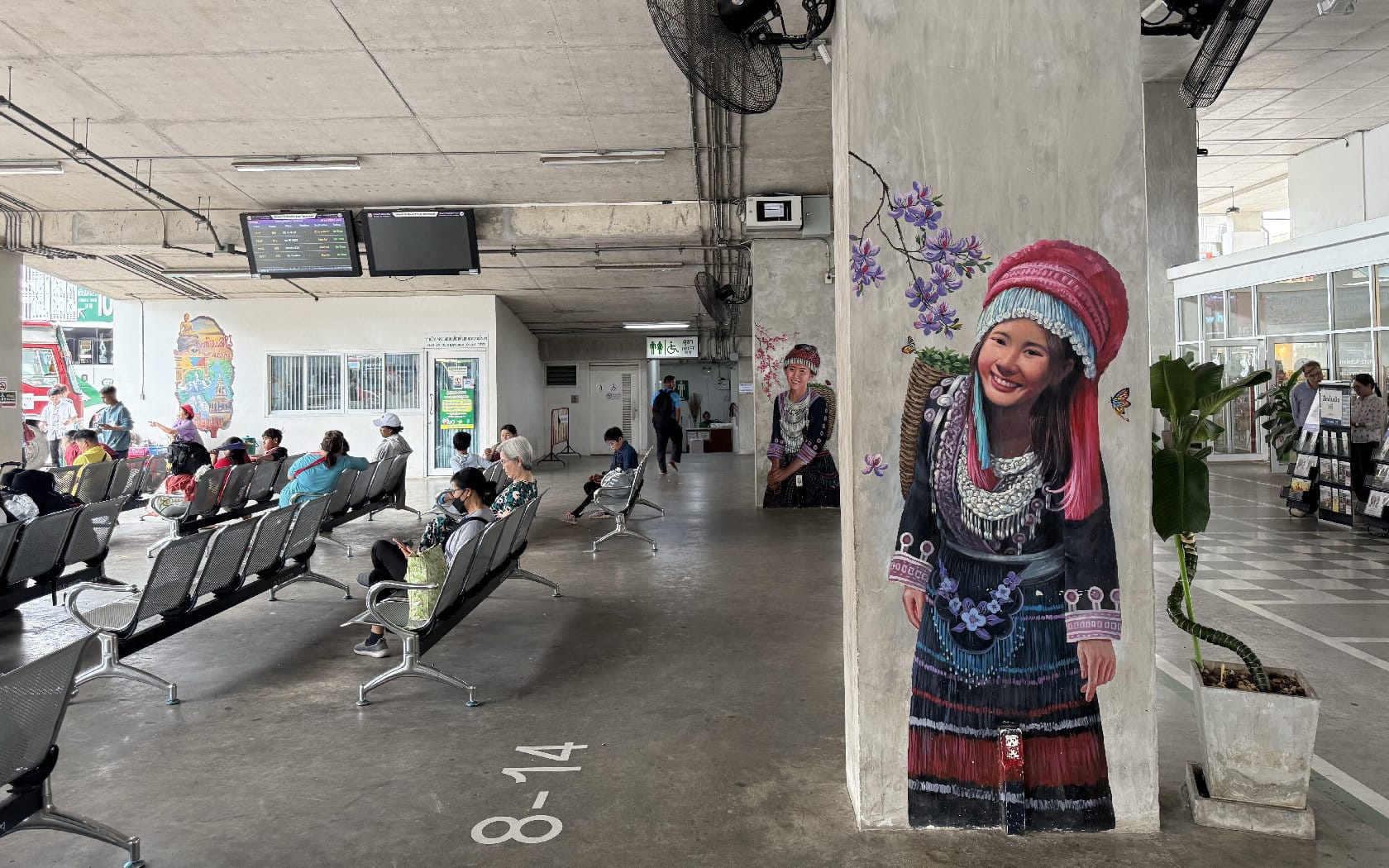



Chiang Rai Bus Terminal 1
Located in the heart of the city, this first bus terminal has long been a vital hub for transport and trade in Chiang Rai—connecting communities from the past to the present. It serves as a central point for public transit, with songthaews (local red trucks) and intercity buses heading to various districts and nearby provinces. The terminal also features a city tram service for scenic rides around town. Step inside and you’ll find the walls adorned with colorful murals that reflect Chiang Rai’s unique identity, along with a Tourism Information staffed by friendly locals who can answer any questions you have about visiting Chiang Rai. On the upper floors, a 24-hour parking garage offers affordable rates—perfect for those who want to park and explore the city on foot with ease.
Getting There & Parking
Just 120 meters from Chiang Rai Night Bazaar
Easily accessible by motorbike taxi, songthaew, or on foot.
Private vehicles can park directly at the terminal’s garage.
Opening Hours
>Terminal Office: Daily, 7:00 AM – 18:00 PM
>Bus Services: Available until midnight
>Parking Garage: Open 24/7
2
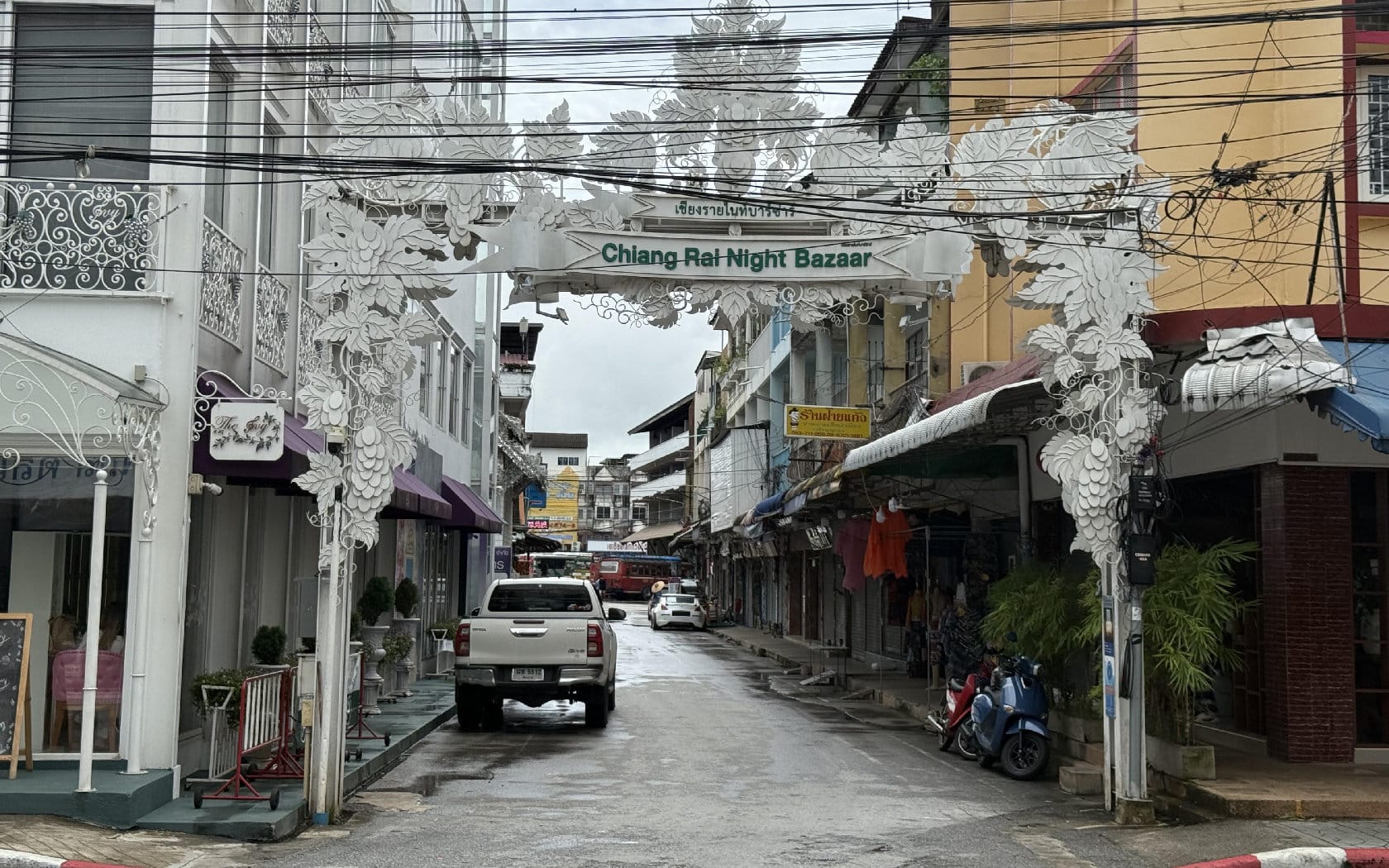
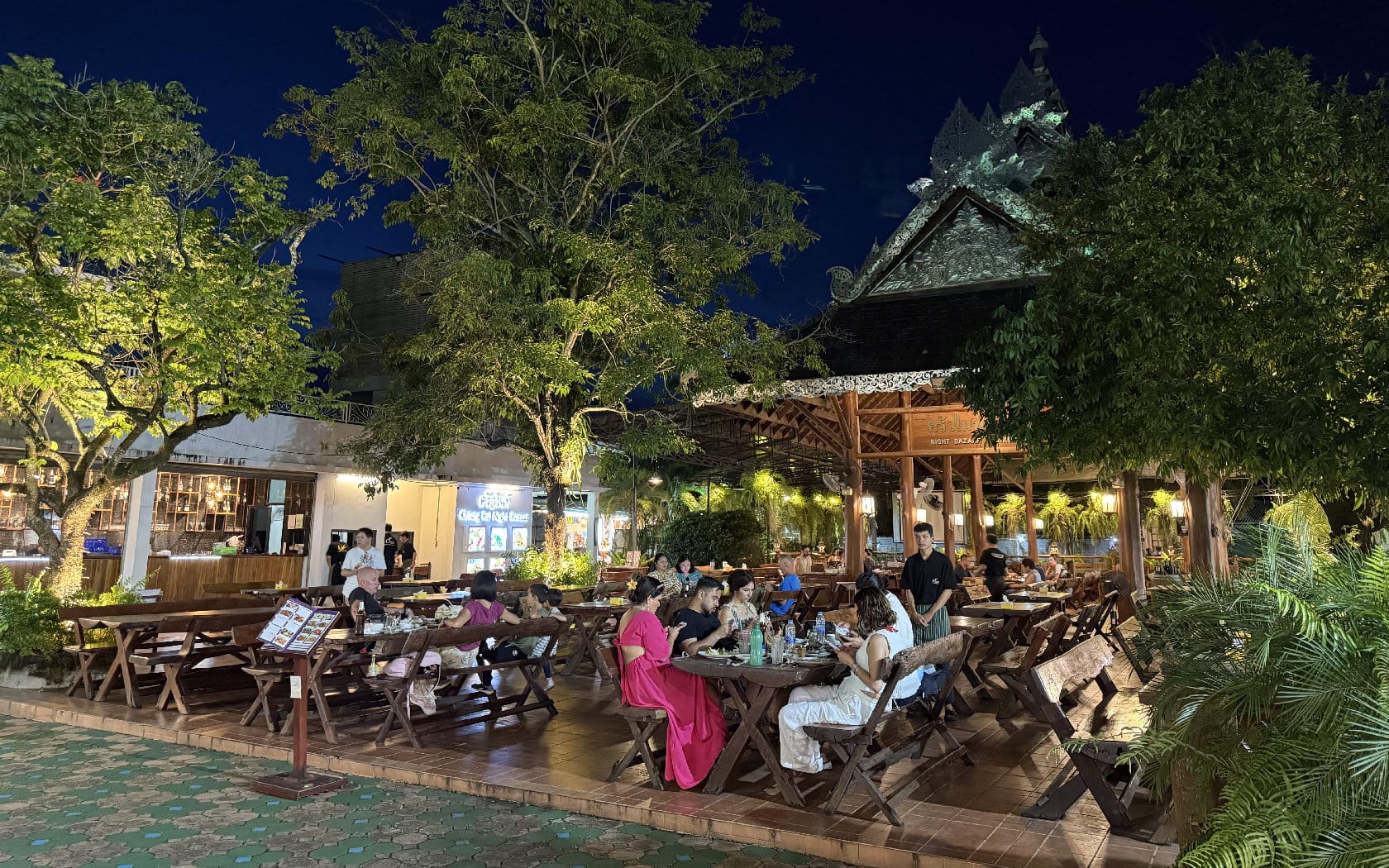


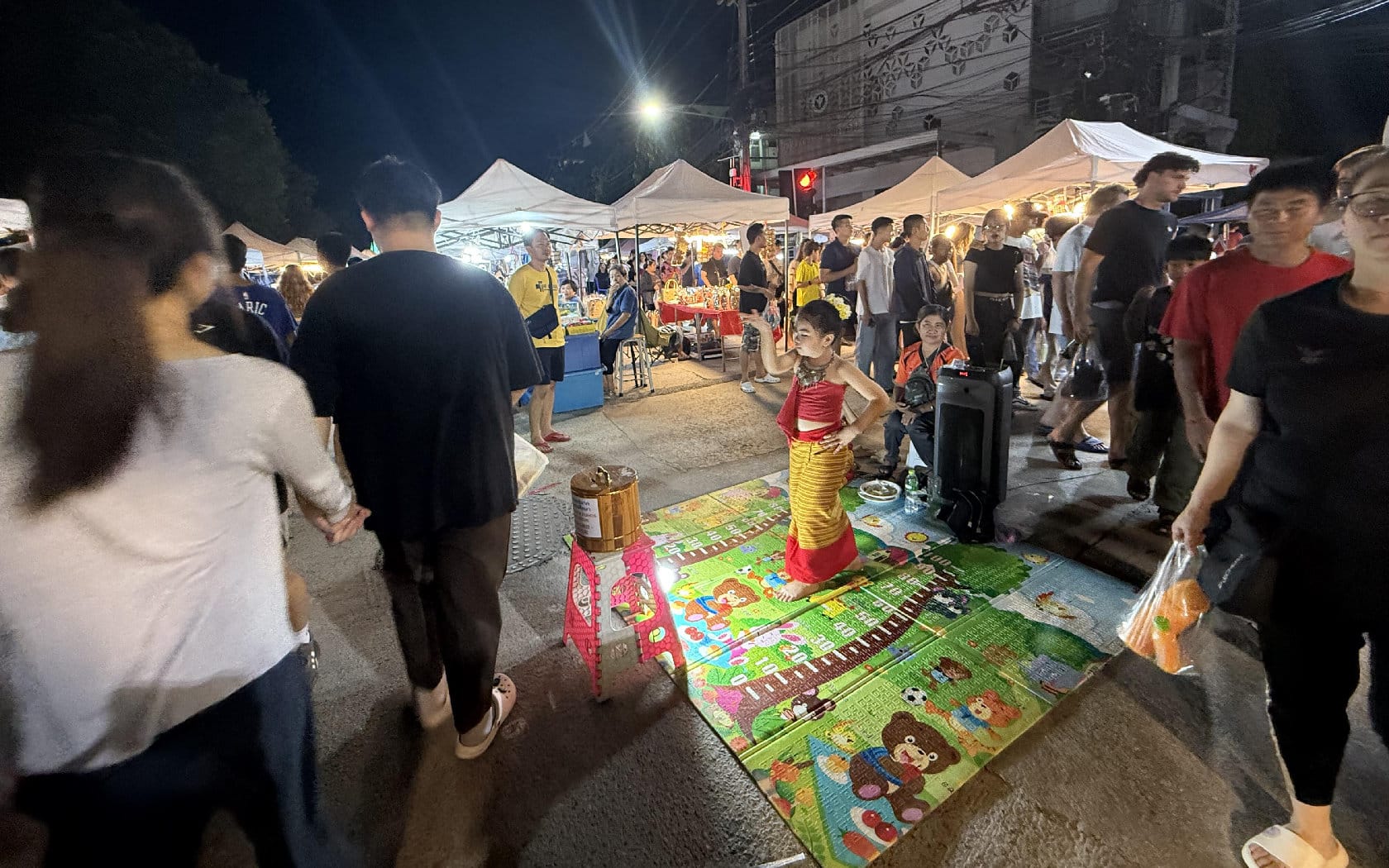
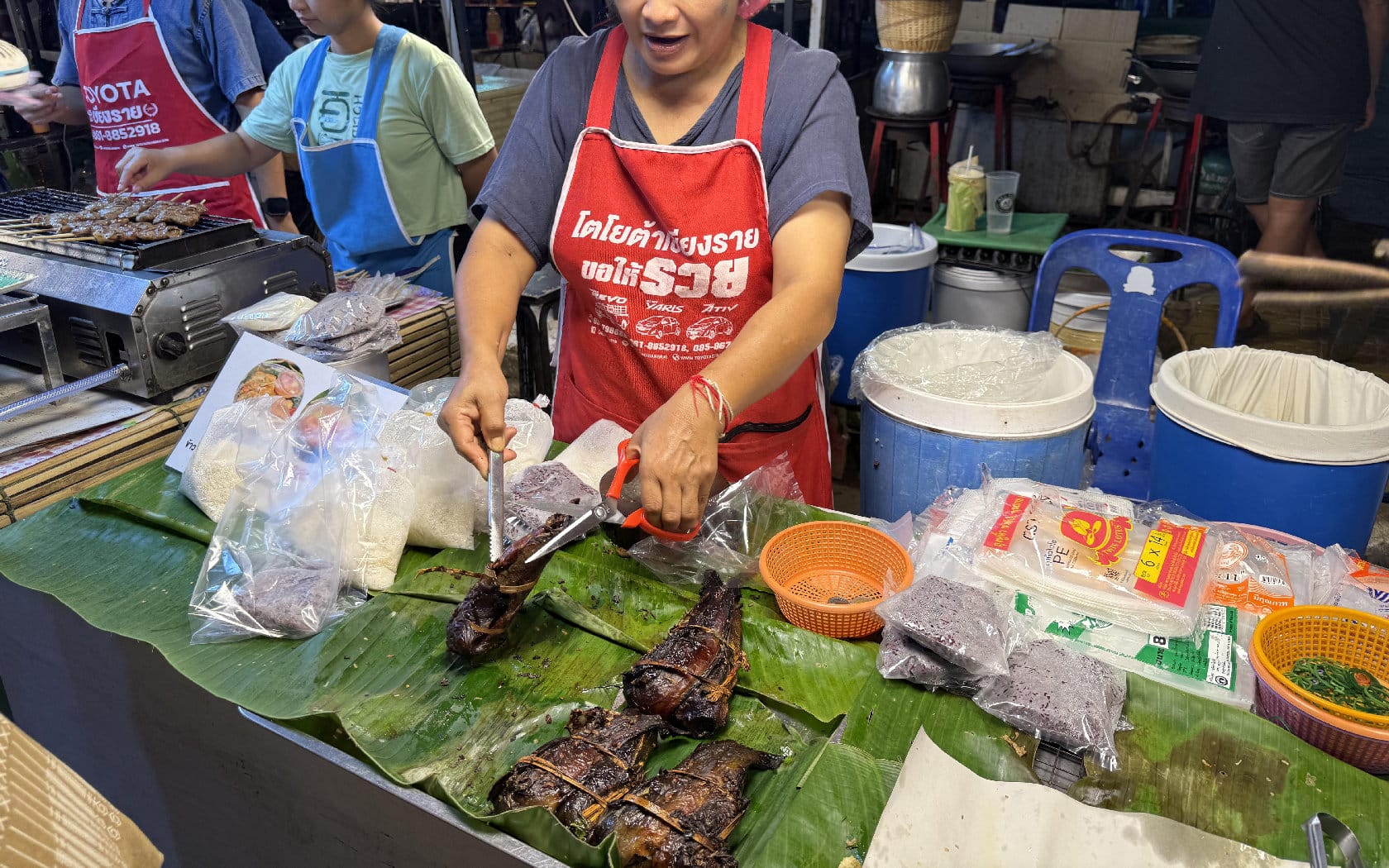
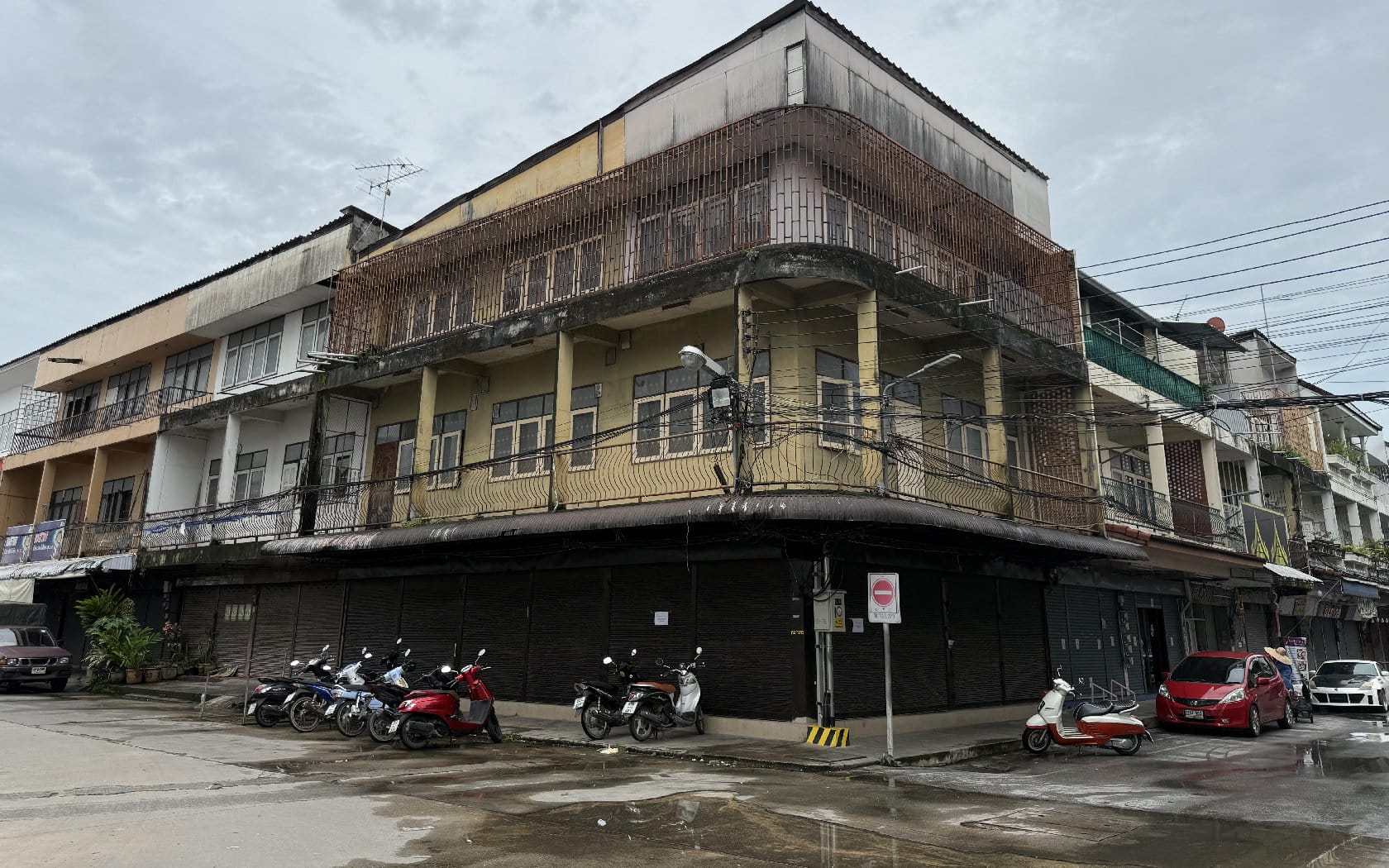
Chiang Rai Night Bazaar Located in the heart of Chiang Rai, this vibrant nighttime hotspot is a must-visit! A lively blend of local food stalls, handcrafted souvenirs, and artisanal goods, the Night Bazaar is also home to a Lanna-style cultural stage where visitors can enjoy traditional performances under the stars. But don’t wait for sunset—by day, this area transforms into a bustling city center filled with authentic local eateries, relaxing massage parlors, and some of Chiang Rai’s most beautiful old architecture, perfect for a leisurely stroll.
Opening Hours
>Daily from 17.00-21.00
>Parking available at Chiang Rai Bus Terminal 1
Nearby Night Markets to Explore
> Chiang Rai Walking Street (Saturday Night Market)
Located on Thanalai Road, this lively street is closed to traffic every Saturday evening as locals turn it into a festive market filled with food, local crafts, and cultural performances—all starting from 17.00 onward.
> San Khong Night Street (Sunday Market)
Just outside the old city zone on San Khong Road, this cozy market invites you to shop for northern-style food and crafts and even join a traditional circle dance with the locals. Open every Sunday from 16.00 – 22.00.
3
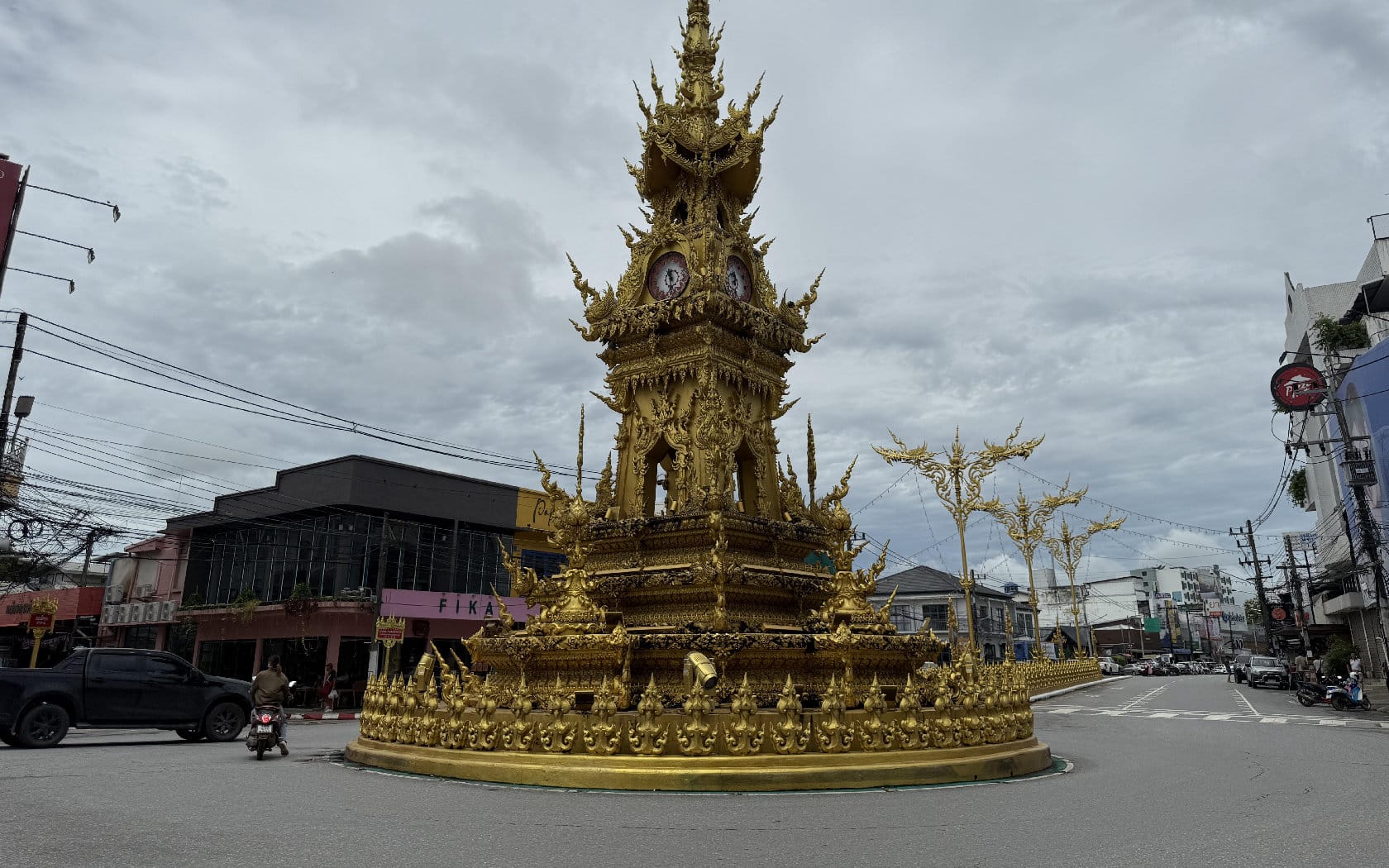
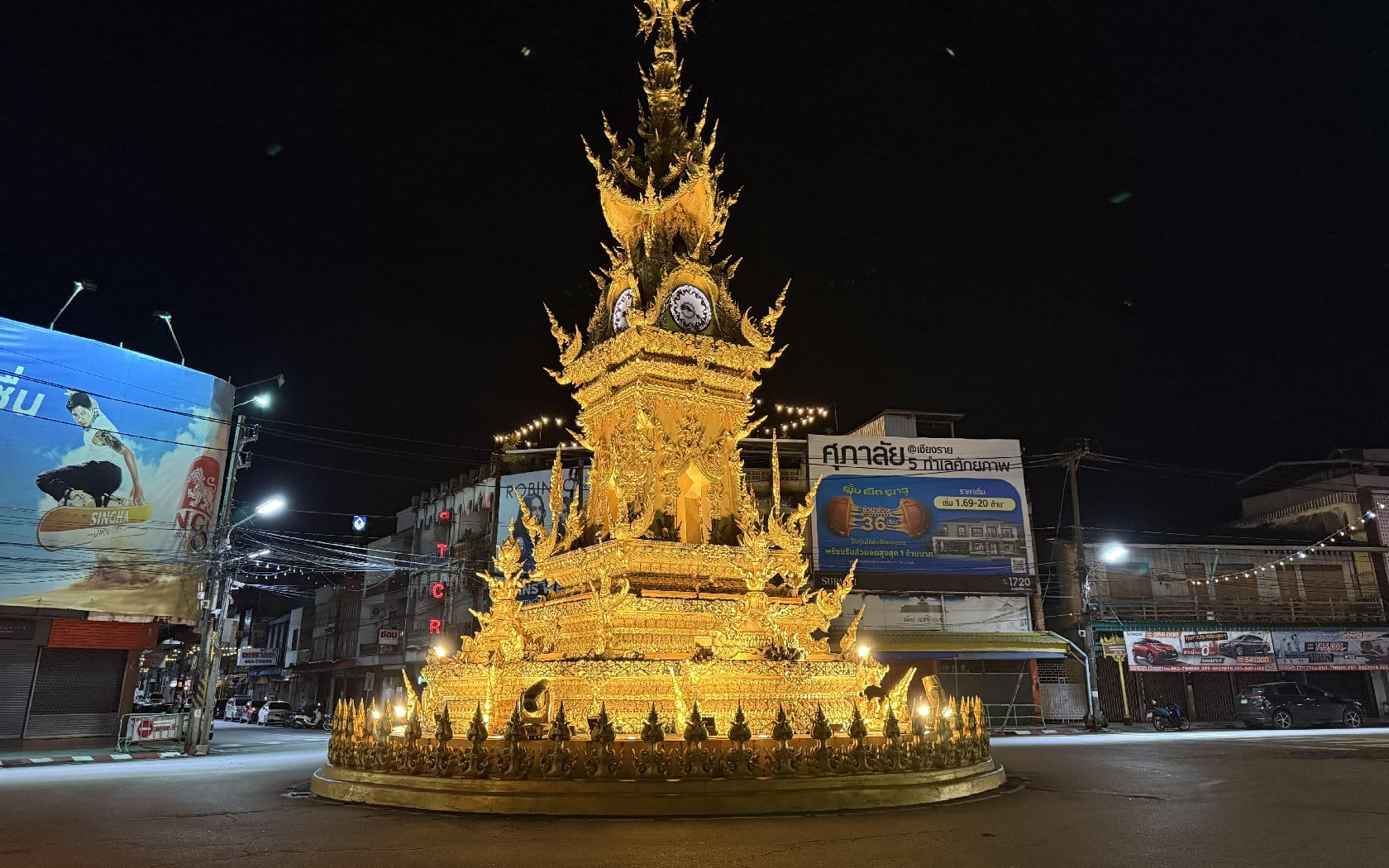
Chiang Rai Clock Tower
This spectacular sculpture, which has stood proudly in the center of Chiang Rai for over 20 years, was created by renowned local artist Chalermchai Kositpipat, the visionary behind the White Temple (Wat Rong Khun). The artwork replicates the detailed style of Chalermchai’s temple designs, combining the elegance of Thai design with the spiritual essence of Buddhism. It took five years to finish and has since become one of the city’s best-recognized monuments. Every evening, the sculpture comes to life with a light, sound, and music show featuring the beloved song “Chiang Rai Ram Luk” (Chiang Rai Reminiscence), which is displayed three times between 19.00 – 21.00
4

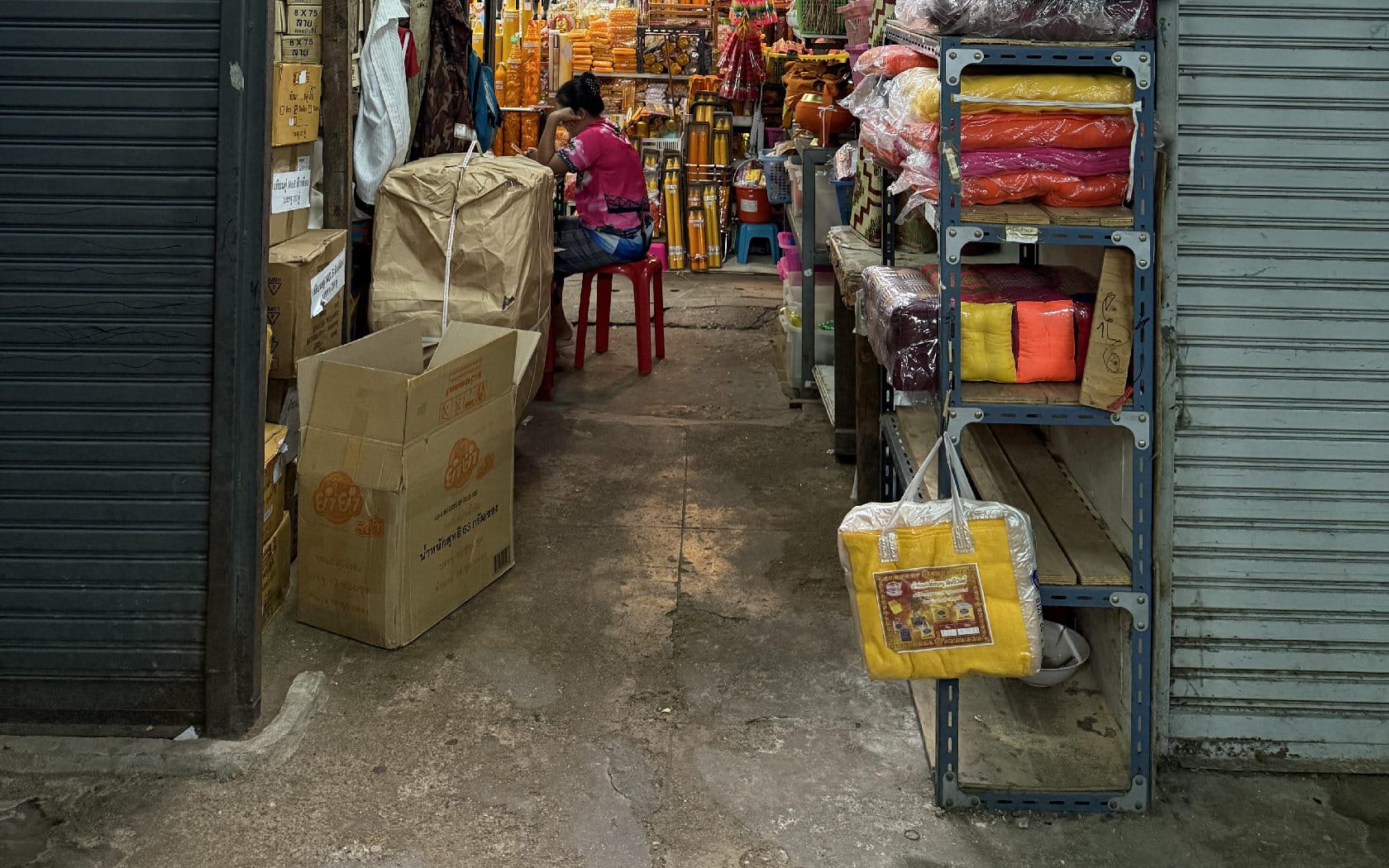
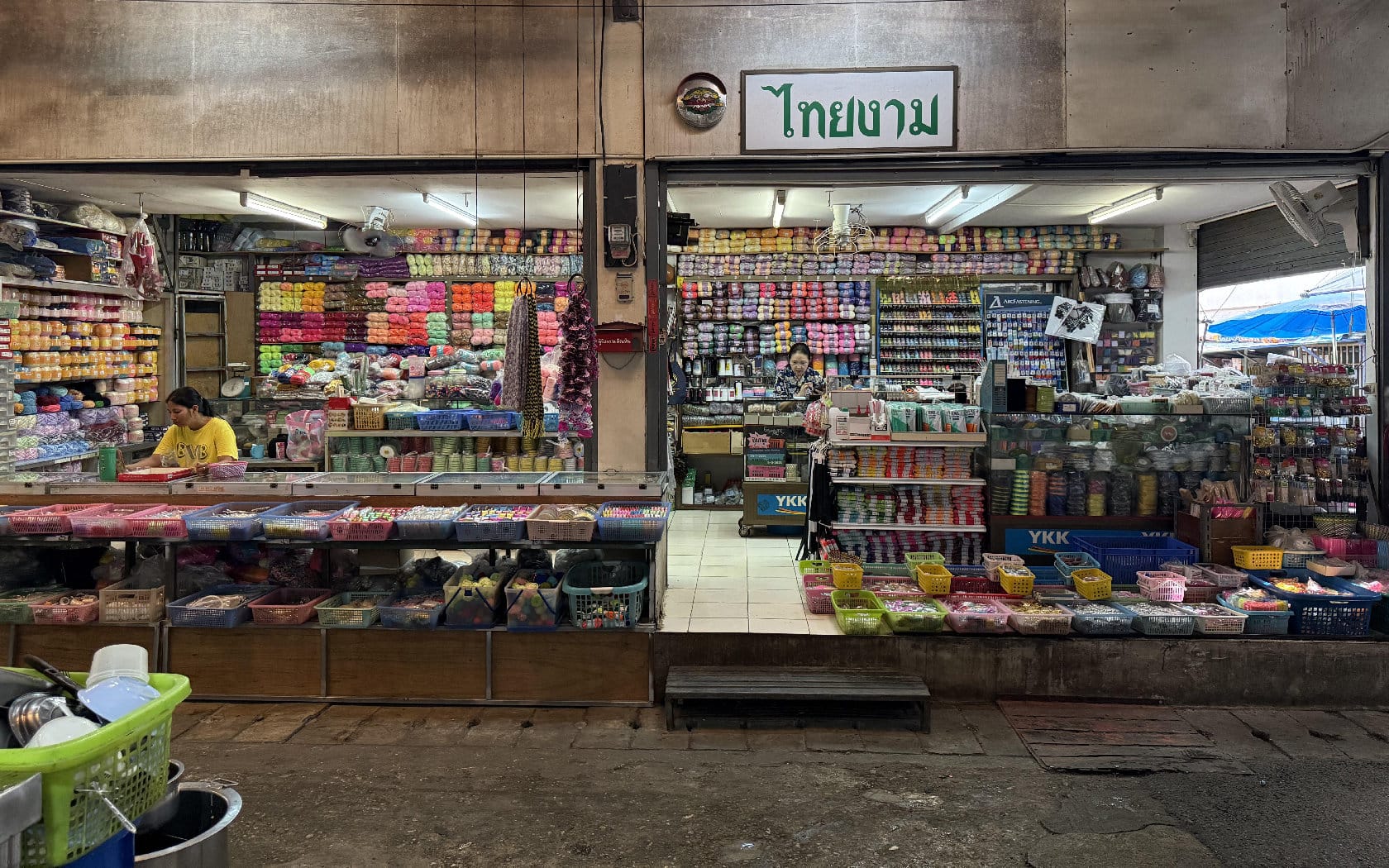
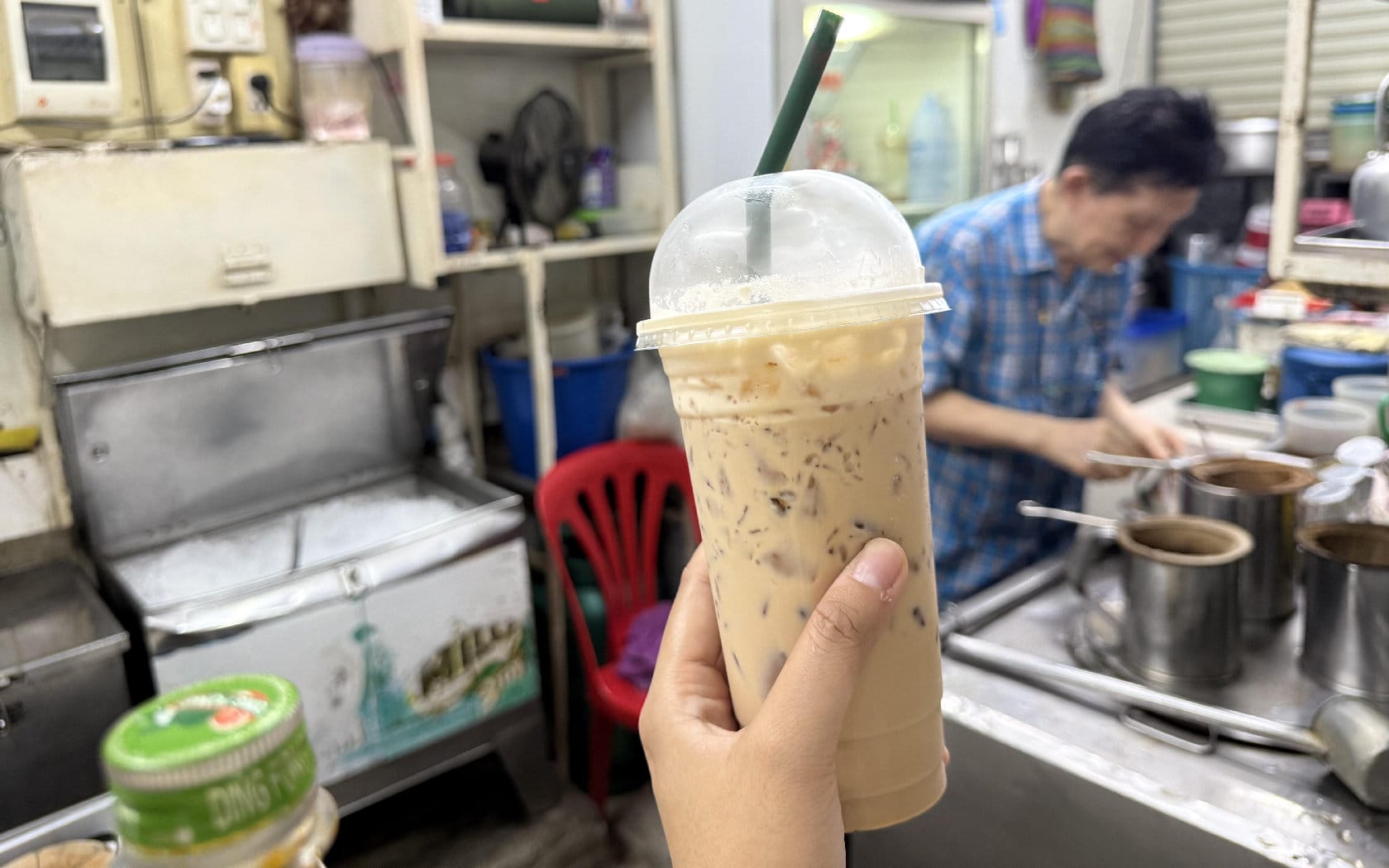



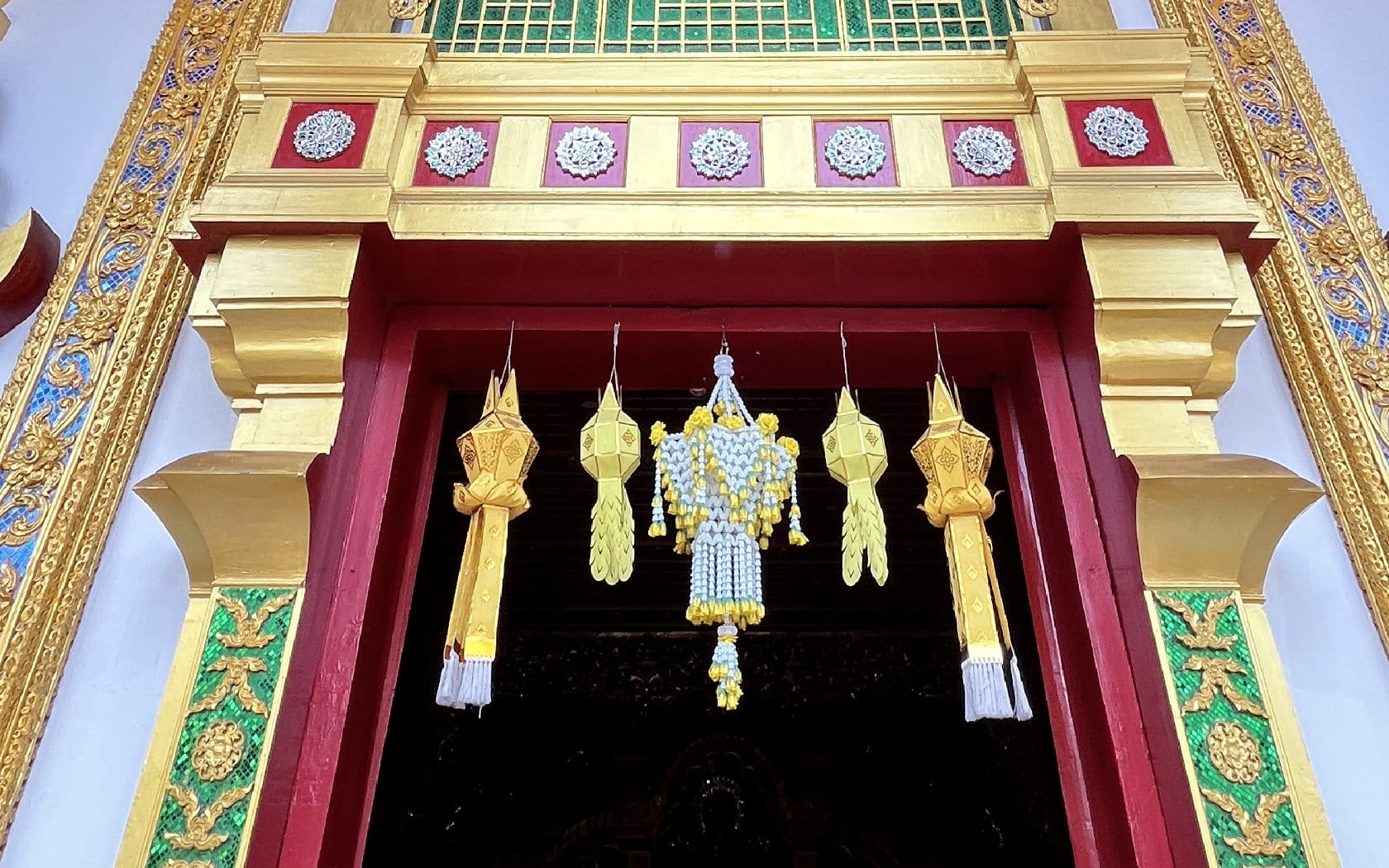
Municipal Food Market 1
Welcome to the largest and most vibrant market in town—the true soul of Chiang Rai, where tradition still thrives. Kad Luang (literally “The Big Market”) is a bustling hub of local life, filled with the flavors, crafts, and characters that define northern Thai culture. Wander through stalls brimming with Lanna delicacies like nam ngiao (spicy noodle soup), khao ram fuen (soft rice jelly), sai ua (northern sausage), and fresh hill-grown vegetables. You’ll also find locally made crafts like handwoven textiles and bamboo sticky rice containers—many sold by ethnic highland vendors who bring their goods directly from the mountains. Most shops are generational businesses that have been passed down for decades, adding even more charm to this cultural hotspot. And after you shop, don’t miss a peaceful stop at Wat Mung Muang, a nearby temple that houses a rare, centuries-old Lanna-style stupa with a striking square base—a treasure rarely seen today.
Must-Try Dishes at Municipal Food Market 1
>Pa Nuan’s Nam Ngiao – Famous for its rich, spicy broth. Open daily 6:00-14.00
>Vietnamese Crispy Crepes – Tucked in Soi Rama Cinema, full of nostalgic charm
>Uncle Weerapong’s Coffee Stall – A local favorite.
5
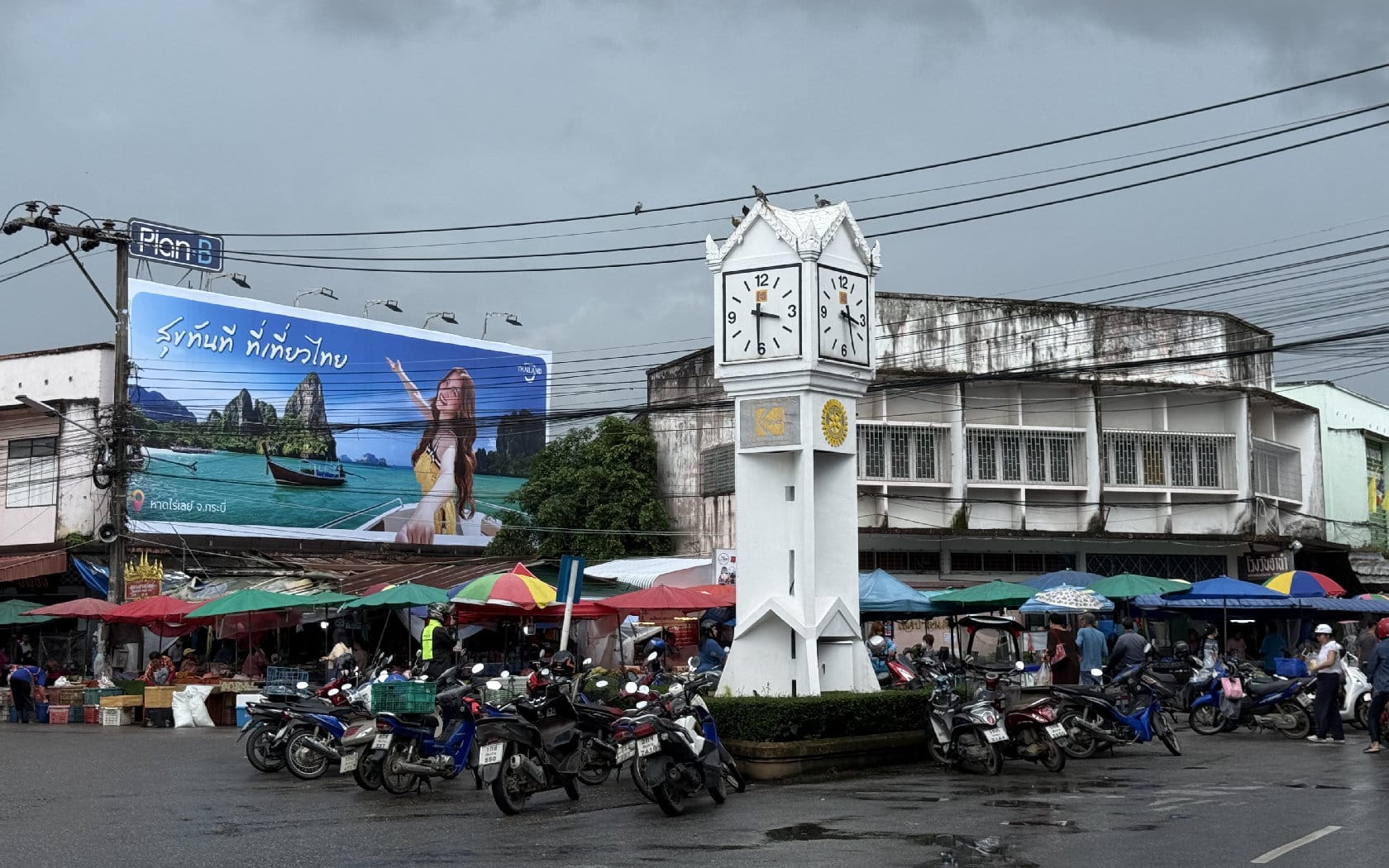

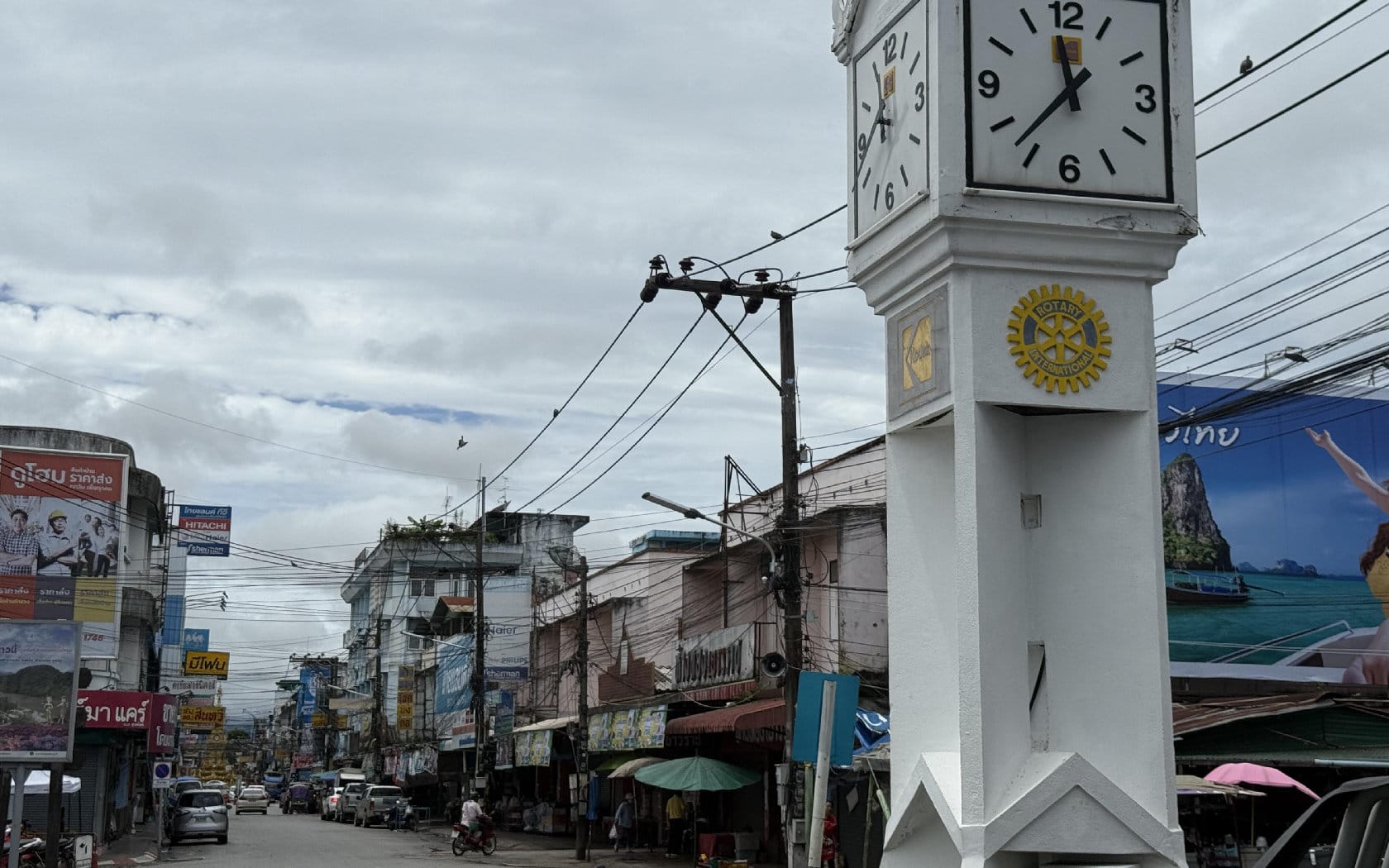
Old Clock Tower
Just 400 meters from the city’s newer clock tower stands Chiang Rai’s very first timekeeper—a charmingly simple structure near Municipal Fresh Market 1, right at the Pawnshop Junction. Back in 1967, the original tower faced a quirky issue: its four clock faces never agreed on the time. That was when the Chiang Rai Rotary Club teamed up with the local Kodak photo studio to fund the construction of a new, more reliable clock tower. The result? A distinctive local landmark that not only keeps time right but also proudly displays the Kodak logo—a nostalgic nod to the city’s creative past. Today, this humble tower remains one of Chiang Rai’s coolest hidden gems, full of character and local pride.
6
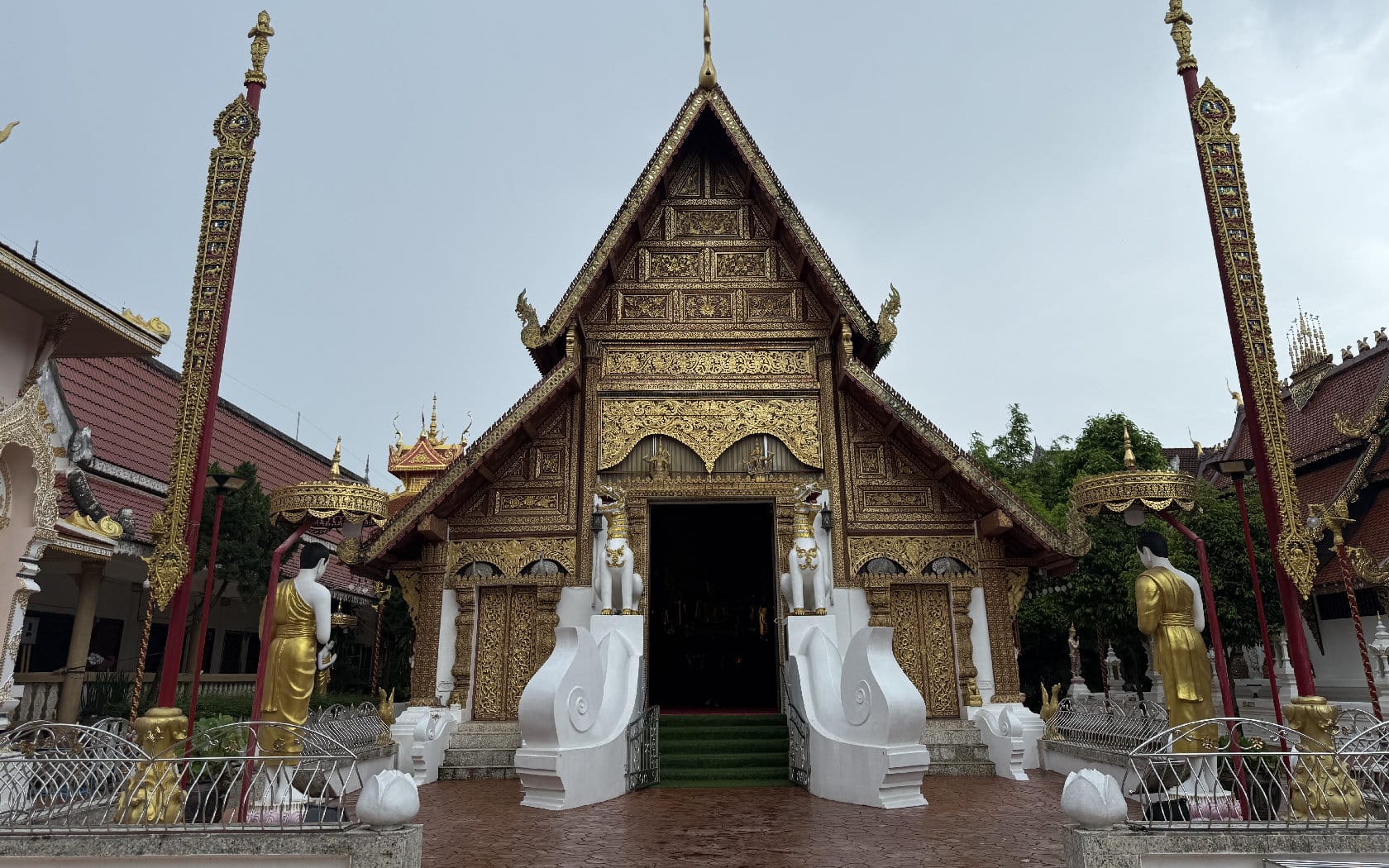
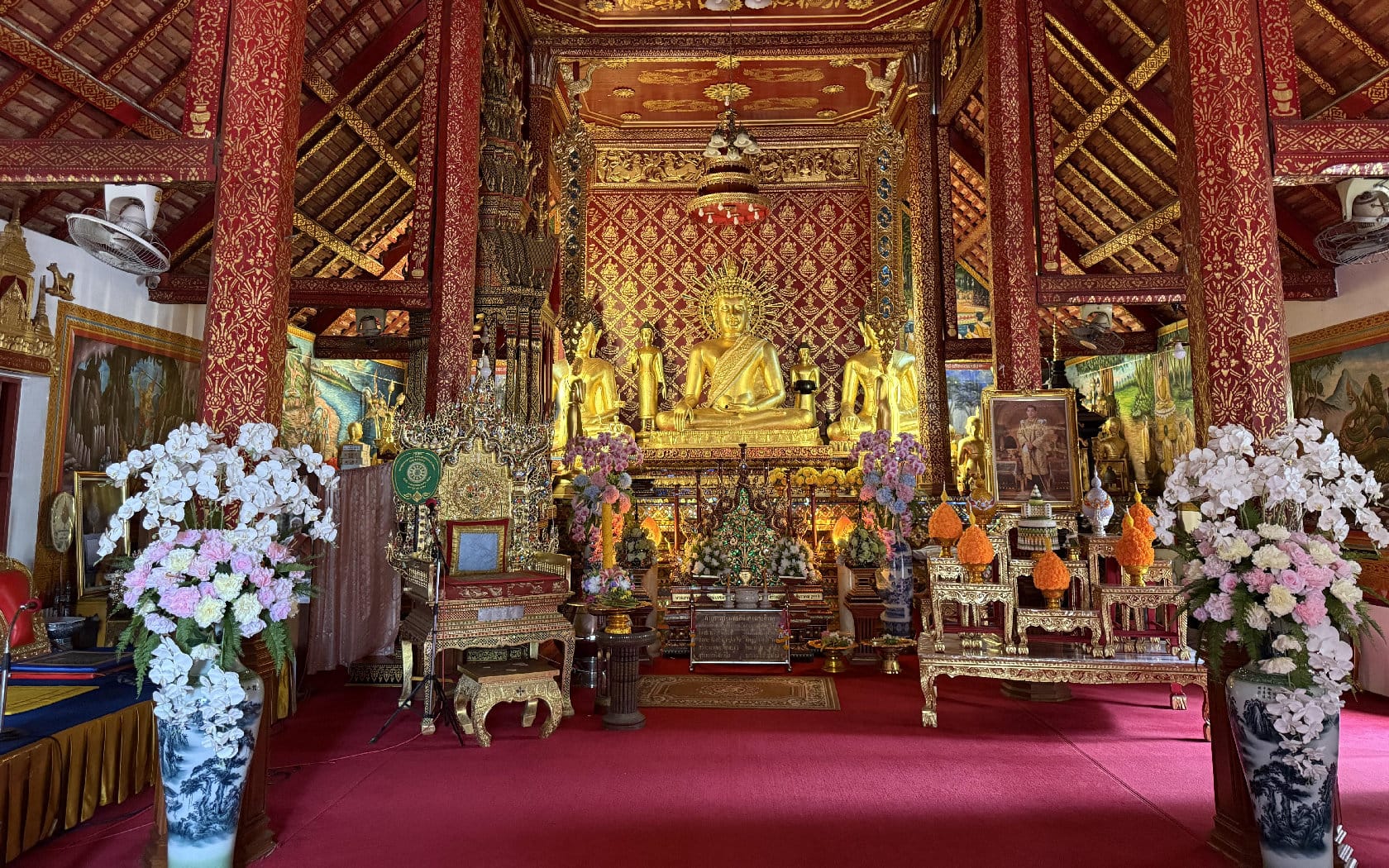
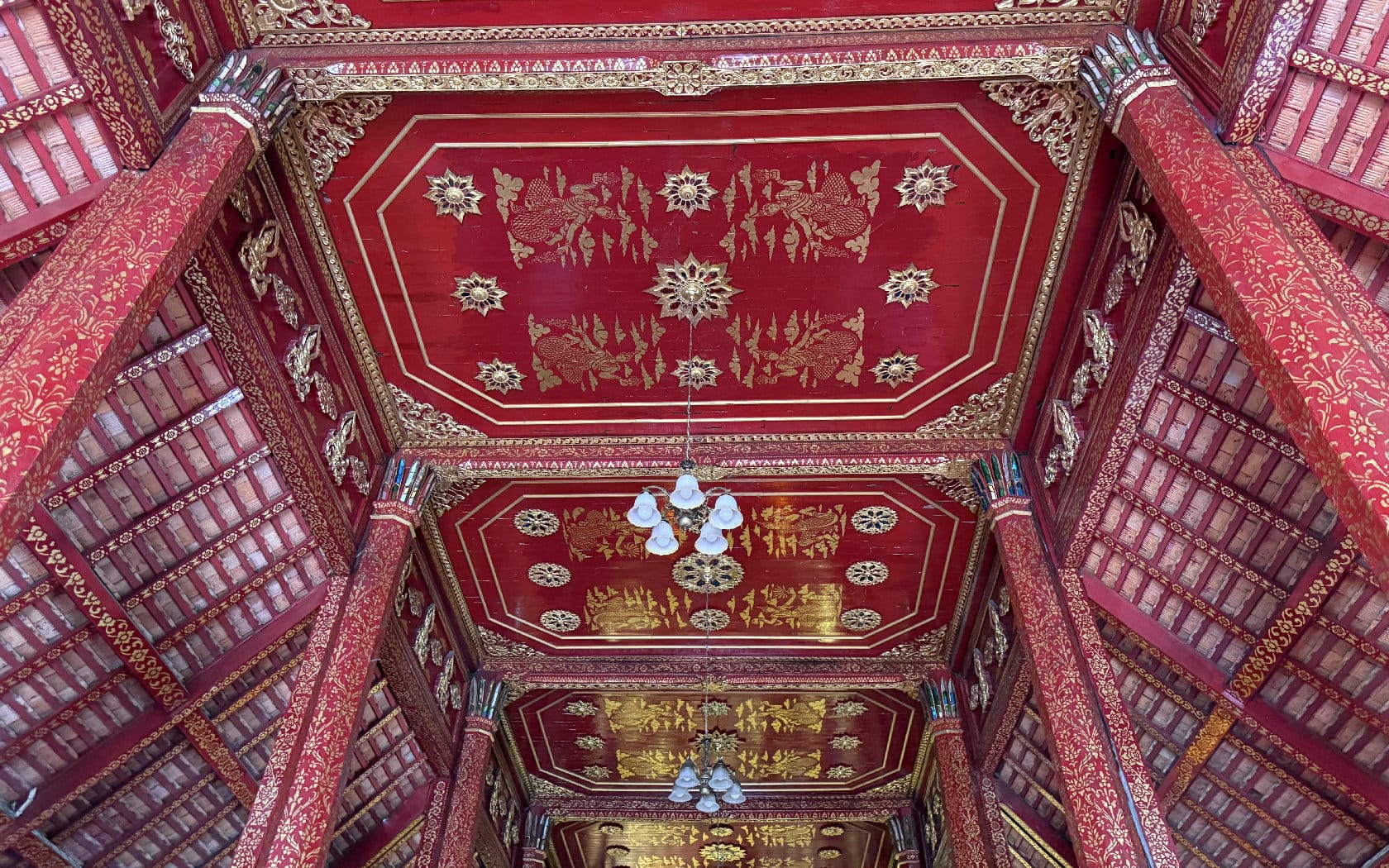
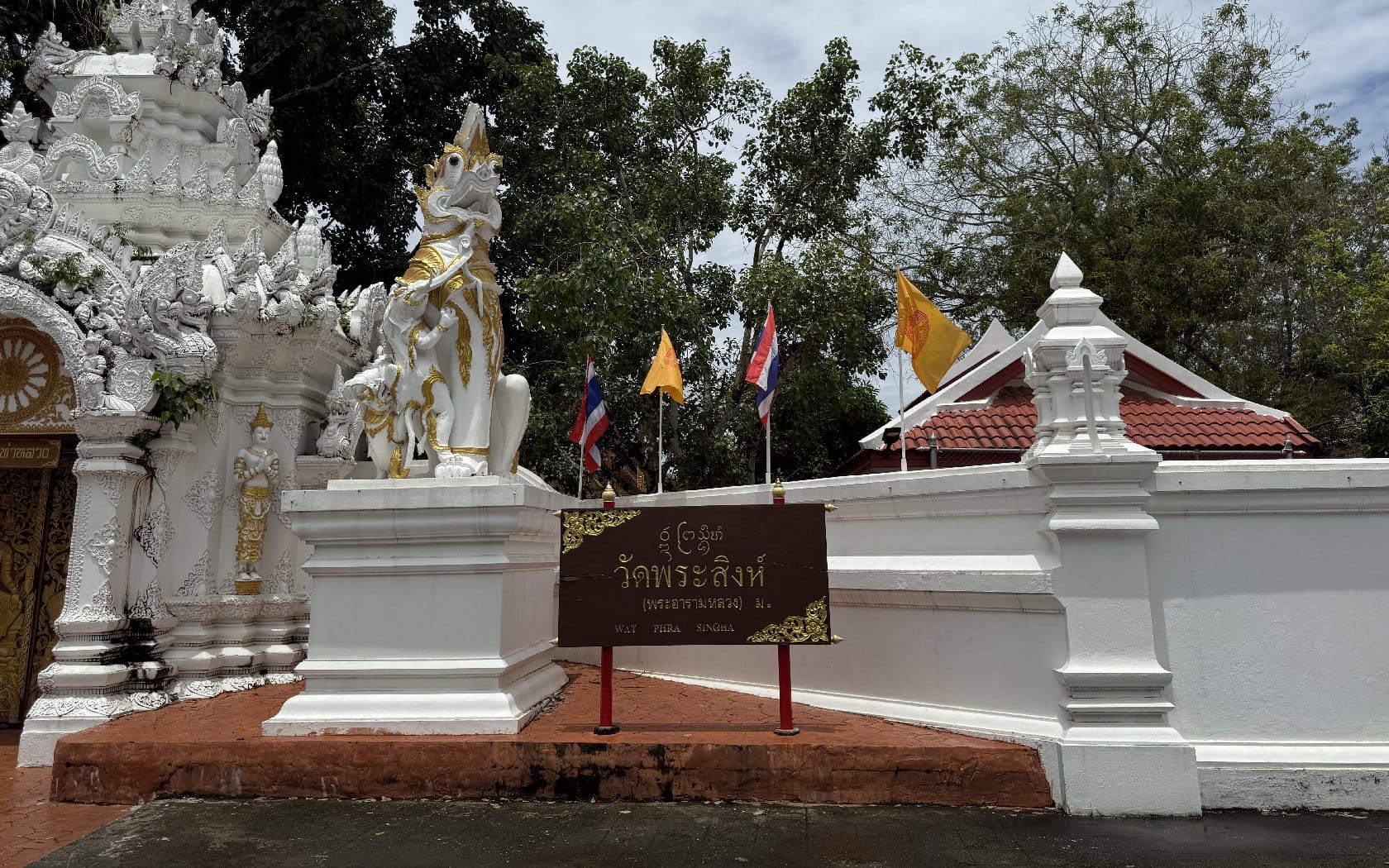
Wat Phra Singh
Step into the heart of Chiang Rai’s spiritual heritage at this over-six-century-old temple, home to the revered Phra Singh (Phra Buddha Sihing)—a sacred Lanna-style Buddha image that has long been a symbol of unity and devotion for the people of Chiang Rai. Admire the exquisite Lanna architecture of the ordination hall, crafted in the classic Chiang Saen style of the 21st Buddhist century, and don’t miss one of the temple’s most iconic features—the grand carved wooden door. This masterpiece of intricate design was created by none other than Thailand’s National Artist, Thawan Duchanee.
Open daily: 07:00-18:30
Admission: Free for all visitors
7
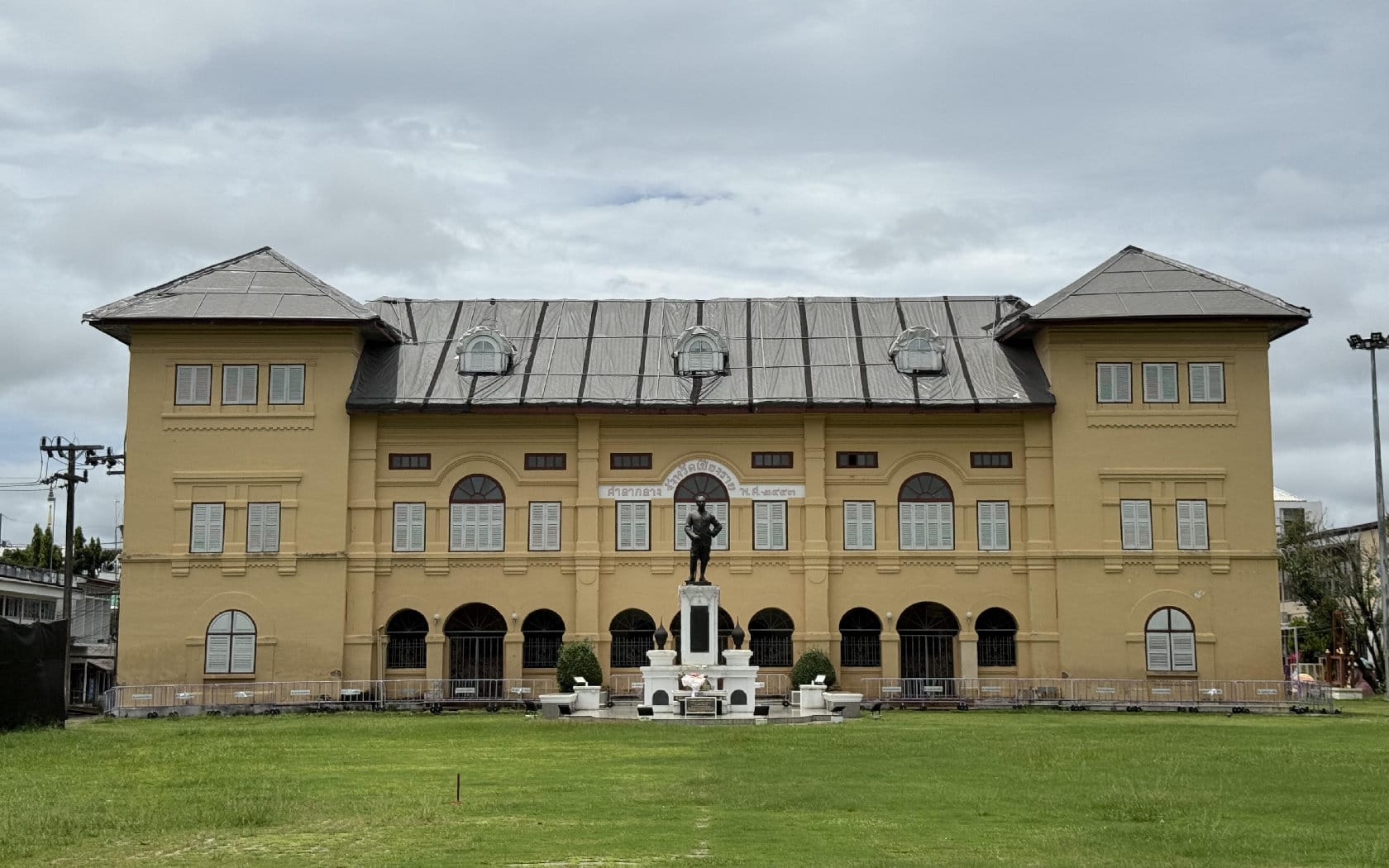


Old Provincial Hall
Standing strong for nearly 130 years, the former Chiang Rai Governor’s Office is not just any old building—it’s Thailand’s oldest surviving provincial hall and a powerful symbol of a transformative era in Thai history. Originally built during the administrative reform that brought the region under central Siamese governance, the building was designed by Dr. William A. Briggs, a Canadian missionary who introduced Christianity to Chiang Rai. Its architecture is a rare colonial-style blend, featuring brick-and-mortar construction, a traditional hipped roof, and charming dormer windows—a sight straight out of another century. Though currently closed for renovation, this heritage site is being revitalized. By late 2025, it will take on a new role as the future home of Thailand Creative & Design Center (TCDC) Chiang Rai, where history and innovation will meet.
8
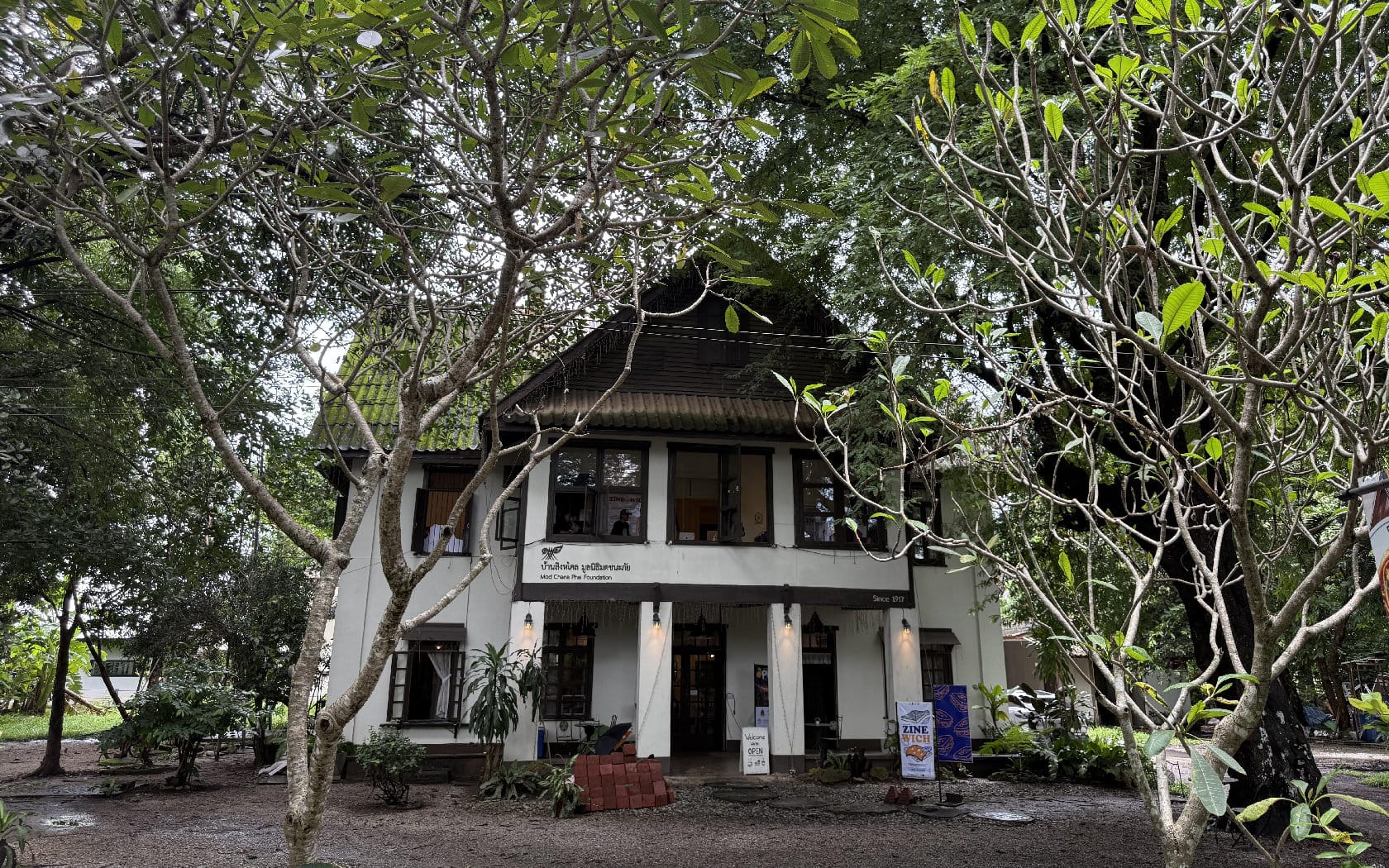
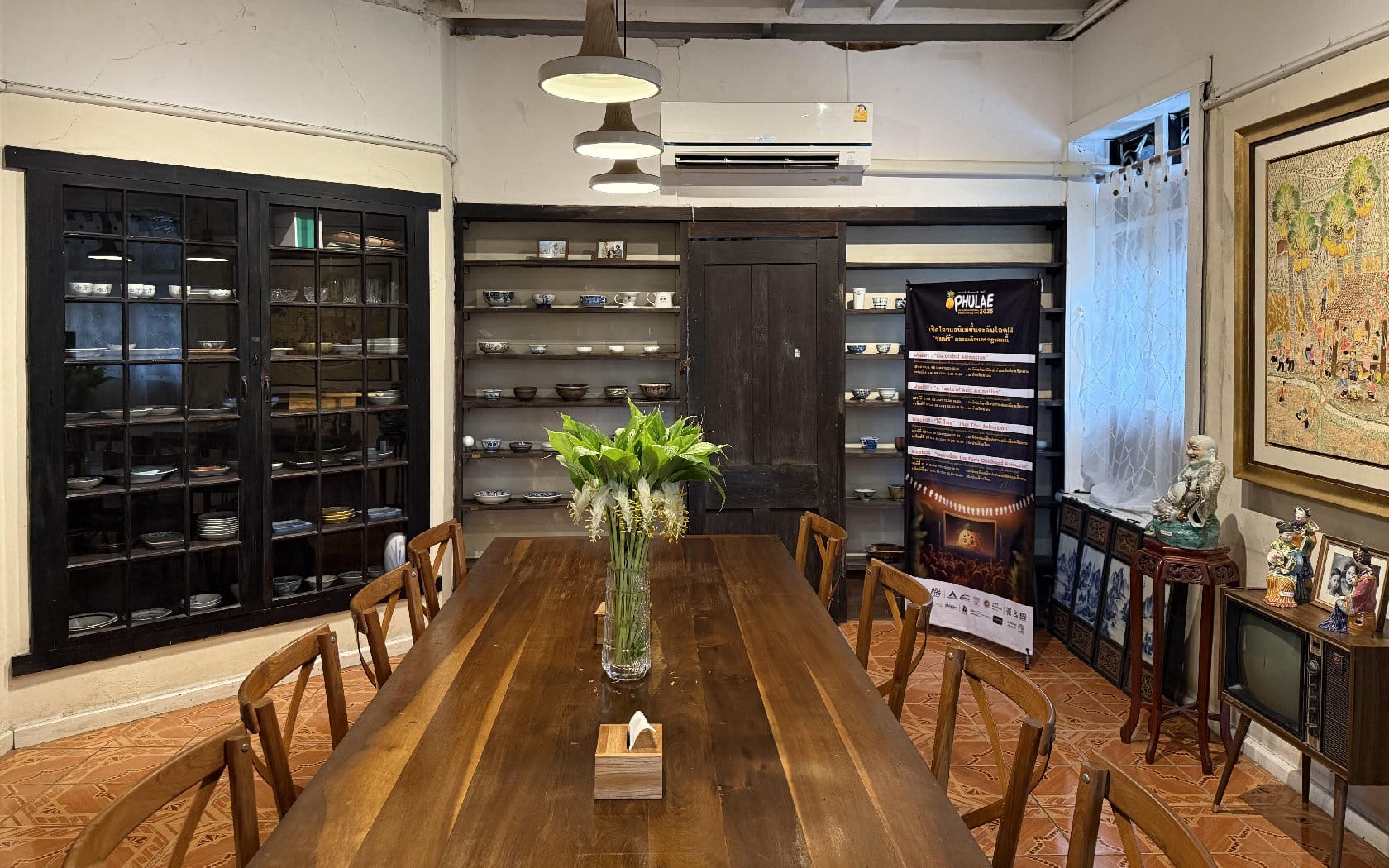

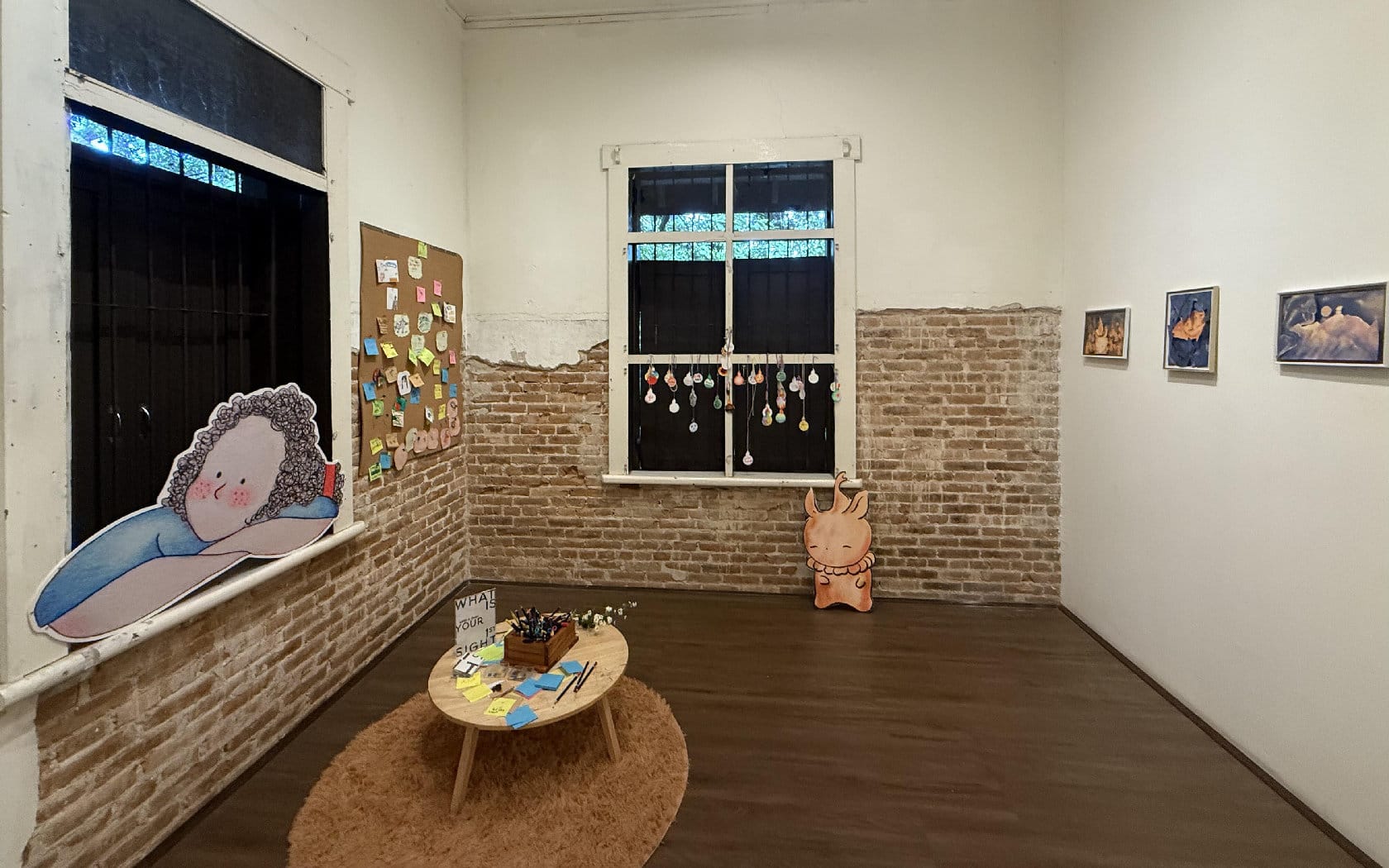
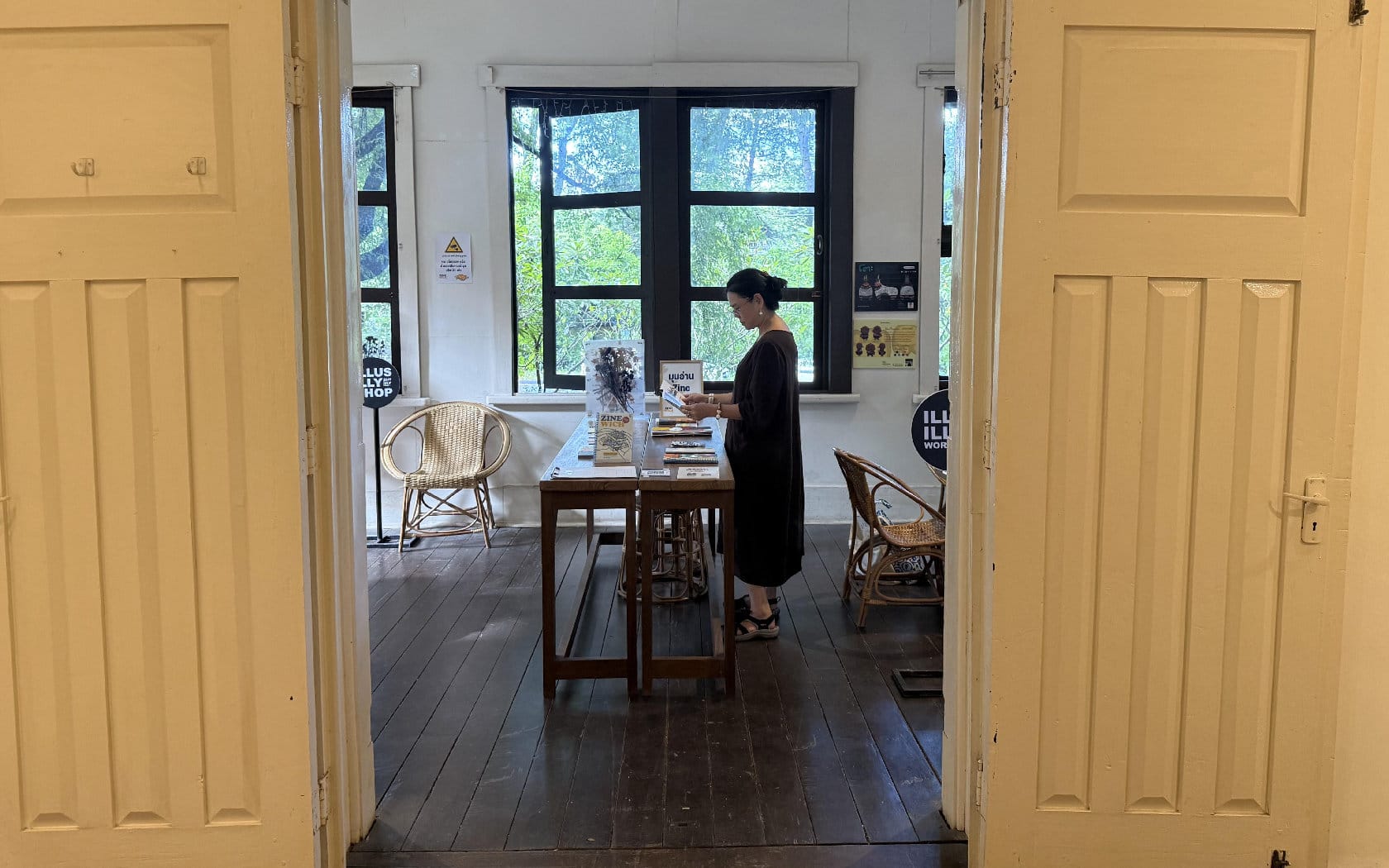

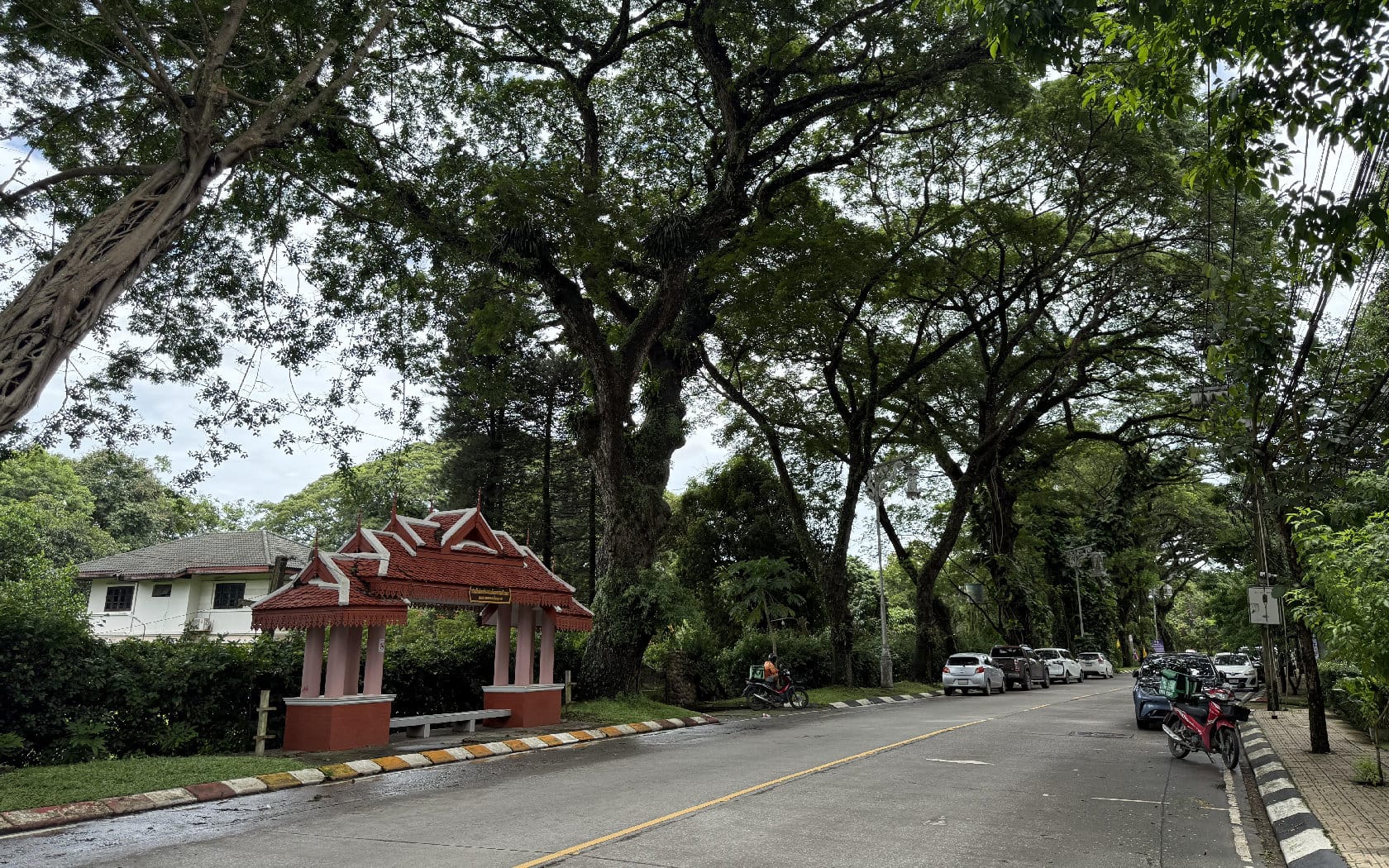

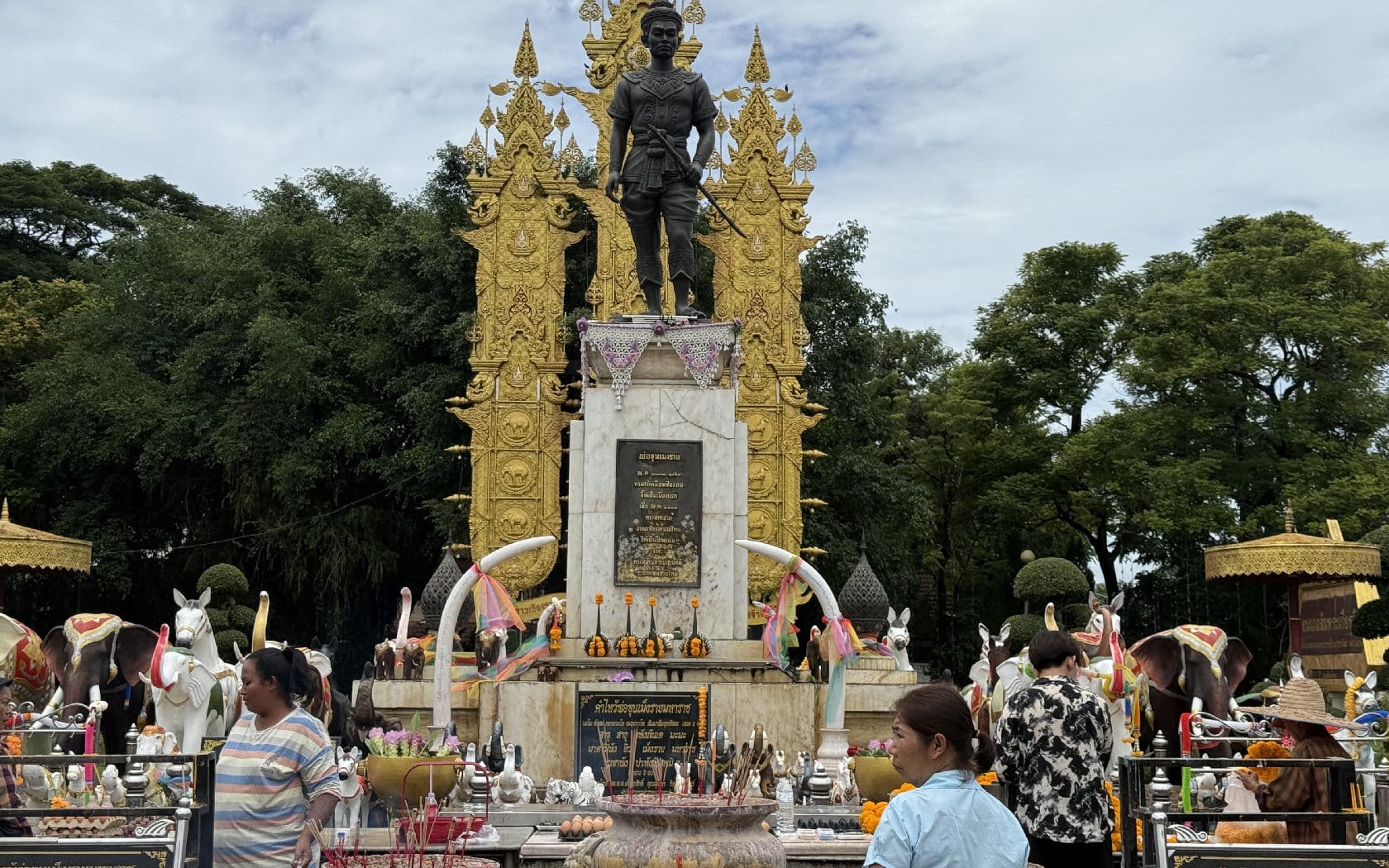
Singhaklai House
Step into the charm of a century-old heritage home known as the Missionary House—a beautiful colonial-style building designed by Dr. William A. Briggs, the same visionary behind Chiang Rai’s historic provincial hall. Once a quiet missionary residence, it has been lovingly restored and reimagined as the headquarters of the Mod Chana Phai Foundation, a creative hub blending architecture, art, and disaster awareness education. Upstairs, explore a rotating art gallery showcasing local and regional artists. Downstairs, relax at Ban Mod Café, where you can savor Northern Thai dishes and indulge in homemade ice cream made from fresh Chiang Rai ingredients. Just outside, don’t miss the magical tree tunnel that lines the front road—a picturesque, shaded walkway that feels like a scene from a movie.
Open hours: Daily (except Wednesdays): 8:00-17:00
Bonus stop for culture seekers: Walk just 600 meters further and you’ll find the King Mengrai Monument, honoring the legendary founder of Chiang Rai. Visitors flock to this revered spiritual landmark to pay their respects and seek blessings for good fortune.
